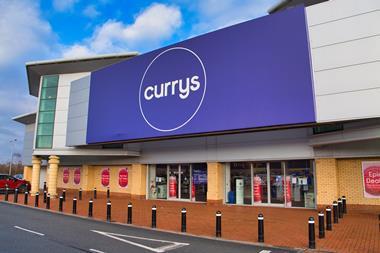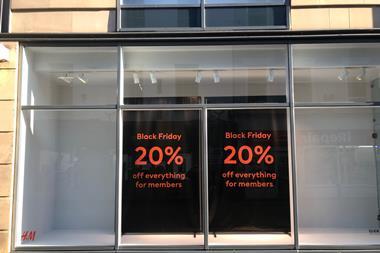It was once just a device that sat at the bottom of a beer can, but now a new kind of widget has been created to perform a very different function. Unlike those used by beer manufacturers, Amazon’s widgets allow customers to feature its products on blogs, web sites and social networking pages. The new UPS widget – which allows consumers to track parcel deliveries from their desktop – has been accompanied by a high-profile advertising campaign.
Widgets are mini software applications that sit on a computer desktop or within a web page.
They have come to the attention of retailers because they can create a new communication channel, help to drive traffic to their web sites and allow them to offer additional services to their customers. They fall into two categories – web widgets and desktop widgets. Web widgets allow you to embed a small application into a web page to provide content, while desktop widgets deliver content over the internet straight to a computer desktop.
The UPS widget was created by Skinkers. Skinkers chief executive Matteo Berlucchi says the vast sums of money UPS has invested in marketing its widget in the past few weeks will certainly help to create awareness among a broad, non-technical, consumer audience.
“The education side of what UPS is doing is important. Widget is a good word because people can understand it is something little, that does something.”
The downside of giving the device such a simple name is that people may think it is easy to create a widget. However, Berlucchi stresses that, if you are to get the full benefit of an application as a new communications and sales channel, it is not.
“Widgets can be extremely simple or complex – building a widget proposition is like building a web site. A cheap and cheerful widget is not the same as building a complete desktop application,” he says.
Adding complexity allows for tracking, remote updates and gives retailers the ability to actively push content to consumers, he explains. It can also provide application support so, for instance, if Microsoft updates its operating systems, your widget still works.
Below, Retail Week takes a look at some of the applications already out there for consumers to use.
Web widgets Amazon-style
Many consumers will have already added widgets to their web pages, whether they realise it or not. Social networking sites, including Facebook and MySpace allow users to add simple third-party applications too, although most of these have been purely for entertainment value.
Tapping into this growing trend, Amazon launched a series of widgets in September, to let consumers in the US and UK feature its products on their blogs, web sites and social networking pages. Anyone can use them, as long as they can add Flash or JavaScript code to their page, and Amazon offers installation instructions and supporting code for many blogging and social network sites.
As an extra incentive, consumers can join its affiliate programme. This enables them to benefit financially if they are able to drive traffic and sales to Amazon, by promoting and recommending its products to their friends, as well as anyone else who chooses to view their personal web pages.
Amazon claims that consumers can build their own customised Amazon widget in as little as one minute using a web interface on its site. Several widget options are available to consumers in the UK, including:
* Wish List– The Wish List widget lets a consumer show the contents of a publicly available Amazon Wish List on their web page. The list of products is selected by the consumer as they browse the Amazon site.
* My Favourites – This allows consumers to recommend and comment on products on Amazon’s site. It also allows them to customise the colour and layout of the widget to suit the rest of the web page. Of course, bloggers are already doing this, but by using the widget and signing up to the affiliate programme, they get paid if their readers take any notice of their tips.
* Product Cloud – This shows clusters of product titles that are relevant to a consumer’s web page. The idea is that the widget automatically changes the content within the cloud to reflect any changes to the content on the rest of the web page.*
* Search – This lets a consumer include an Amazon search box on their web page. Search results are shown inside the widget, so viewers can look for Amazon products without leaving the consumer’s web page.
Amazon says that it chose to launch the widgets in response to consumer demand. In particular, it says that bloggers had asked for a “fun and interesting way to display Amazon products on their pages as a way to showcase their favourite things”.
Direct to the desktop
Topshop launched a desktop widget for its daily fashion fix earlier this year.
In the US, JC Penney has taken this to the next level bolstering its web sales with JCPToday. The desktop application provides customers with daily notifications, special offers and quick links to JCP store ads and the web site.
The application has been built on Skinkers Live Notification Platform.
Skinkers chief executive Matteo Berlucchi explains why retailers should be looking at the potential opportunity for launching such an application for their customers.
He says: “E-mail is only an effective channel for person-to-person communications and then it is called correspondence. At first, the volume of e-mail was manageable – but now consumers are getting five to 10 times more e-mails than they were five years ago. So people tend to go through their inbox and read what they immediately recognise. Everything else is secondary.”
He asserts that of all the communication channels a brand could have, a desktop channel could be the most valuable, because the consumer has to opt in to it.
He continues: “If the relationship between the consumer and the brand is strong enough, then they will make space for it on their desktop.
“For instance, customers that go to JC Penney tend to shop a couple of times a week. When you have a frequent relationship, then there is real value in having a dedicated communication channel.”
He adds that while a retailer’s whole customer base won’t want, or be able, to download the application, the potential is still high.
“There is maybe a maximum of 20 per cent of consumers who can’t download the application – but compare that with the number of people who don’t open the e-mails you send them,” Berlucchi points out.
He adds that widgets also overcome the issue retailers have of constantly having to cleanse their customer data because e-mail addresses change. “Once you have the desktop client in place, then you have guaranteed delivery to the consumer.”
But how do you measure the success of investment in creating a desktop application? You have to look at the real bottom line, at sales uplift, and you can track it as a separate channel.
So far JC Penney’s offers have been focused at driving custom to its web site. However, by allowing customers to print offers you send them and use them in stores, you can also track uplift in multi-channel sales.
Ups Promises a device with real value
UPS has just launched a desktop widget to provide services to both customers who use its shipping services and its customers who receive packages via the service.
UPS UK and Ireland marketing director Nick Basford says: “The widget is a short cut to the applications shippers use most frequently, for instance, for tracking and originating shipments and calculating time and costs.”
Messages concerning changes and updates to UPS services will also be communicated to customers via the widget.
Consumers can also add other syndicated newsfeeds (RSS feeds) to the UPS widget. That, UPS reasons, is a further reason for a consumer to download the application and means that users’ desktops do not need to be cluttered with multiple widgets.
This means it is still useful to have on the desktop, even during periods when the user is not tracking parcels, Berlucchi points out. He says: “Designing something that looks cool is not enough. If it doesn’t deliver real value, then people will get rid of it.”
Basford adds: “On a daily basis we track how many people have downloaded the widget and how many of those are already UPS account holders.”
Although he wouldn’t give away further specific metrics, he did add that UPS would be looking at the amount of business existing customers do before and after downloading the widget.
He adds: “We are monitoring the initial response and already have in mind the next phase of applications.”
He concludes that rather than being a differentiator in itself, the widget allows customers to more easily access the services that differentiate UPS from its competition.
Affiliates get in on the widget act
Retailers could soon find their brands on an increasing diversity of web pages, as affiliate marketing networks launch widgets in order to deliver suitable product advertising, based on the content of web pages.
So, even if a retailer doesn’t launch its own web widget, it may find its products and brand images being used as content within other companies’ and brands’ sites.
Affiliate Window has created widgets for the affiliates in its network so that they can quickly and easily add dynamic content to their pages. For instance, on a CD or DVD review page they can add a widget that will show the various prices the product is being sold for by different retailers.
Affiliates themselves are also creating their own widgets. One has even built his own application – iSaved Cashback UK – which Facebook users can add to their profile page. The idea is that the affiliate splits the commission it receives with users. The user must log on to retailers’ web sites to buy products via the application, so that all sales can be tracked back to the affiliate.


























No comments yet